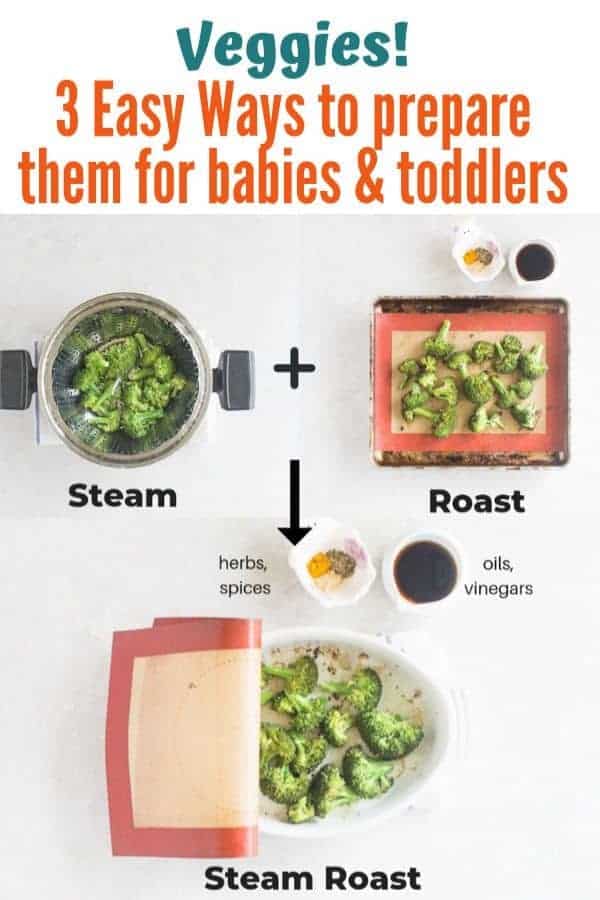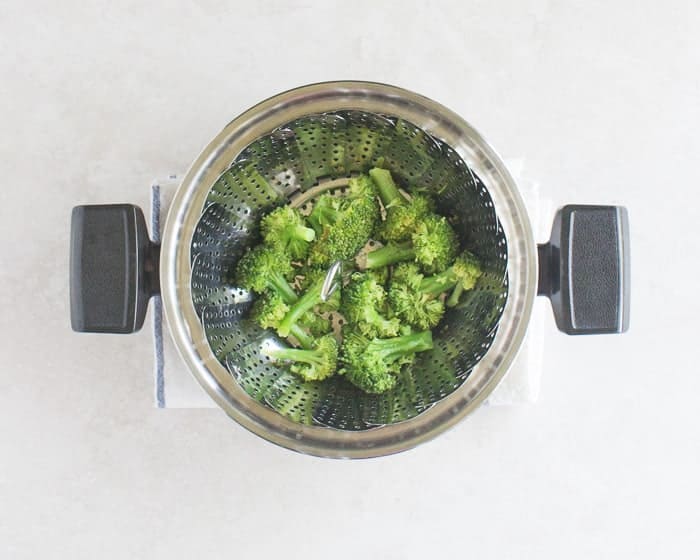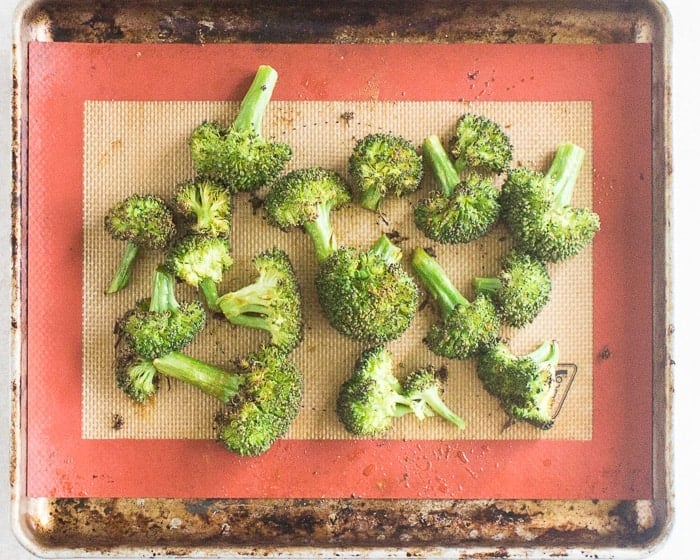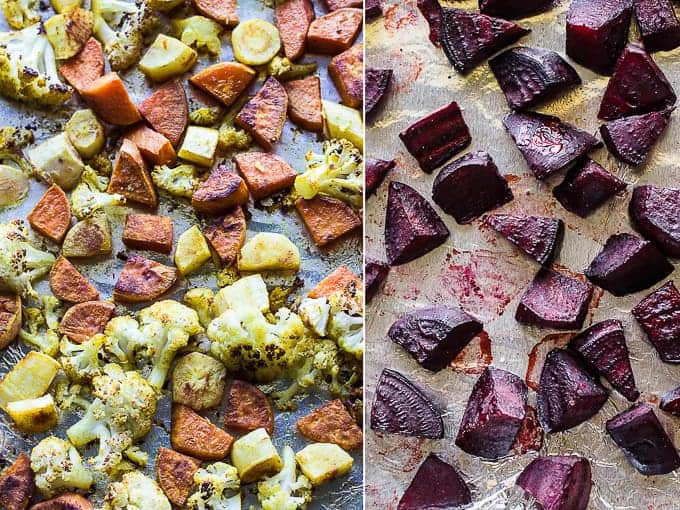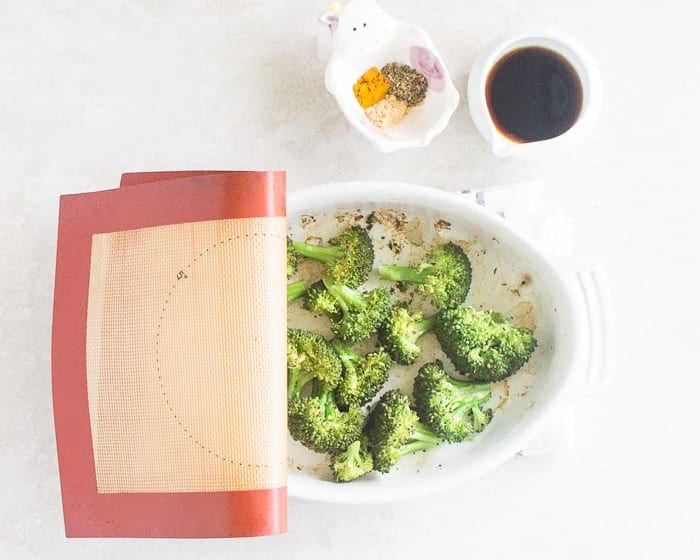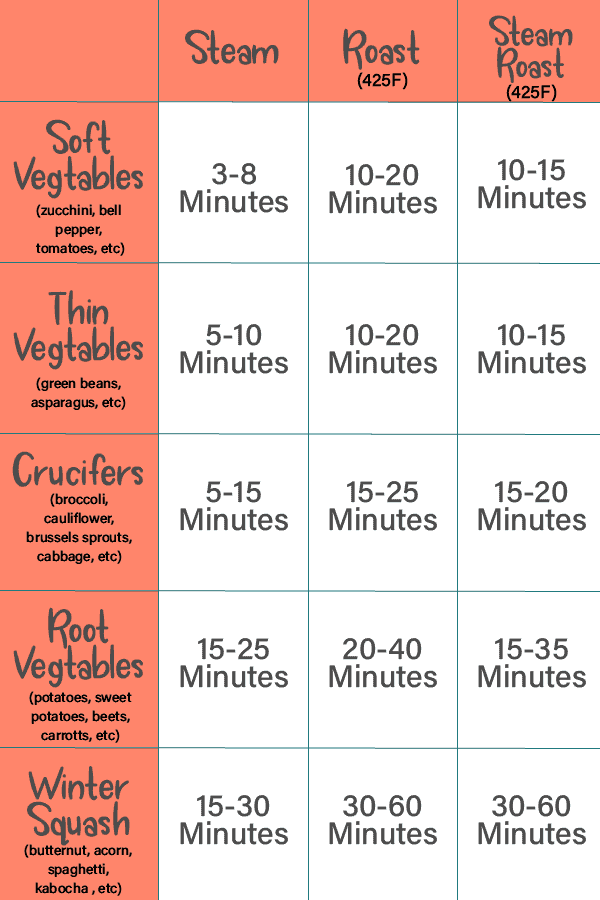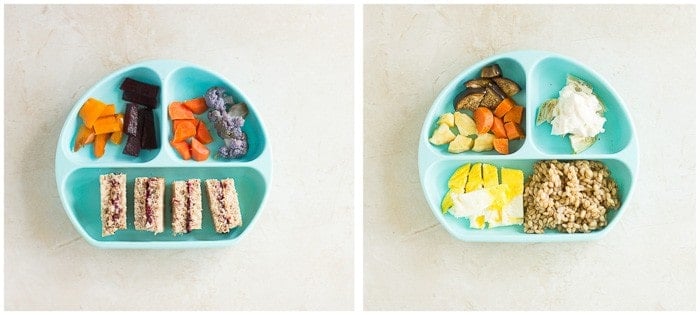We all know veggies are good for us. But getting our babies and toddlers (let’s not forget older children as well as adults in the family) to enjoy them can pose quite the challenge. And as a dietitian, I would tell you to keep offering even if they get no love because exposure is everything! Of course, we sure would like to see them eating their veggies sooner than later. While preparing vegetables that our little human beings will enjoy may seem like a daunting (nearly impossible) task, it doesn’t have to be! Simply switching up the cooking method or flavoring agents can make a world of a difference for picky eaters! Let me show you!
Baby Led Weaning First Foods
Vegetables make for a wonderful baby led weaning first foods along with iron-rich and high-calorie sources. First, start with vegetables that are fresh and seasonal. And then comes the fun part – mix it up! Eating the same vegetables prepared the same way day in and out would be boring for anyone. I put together this post to encourage you to get creative and switch up your cooking methods, experiment with different flavoring agents – oils, herbs, spices, vinegars, butter… Endless possibilities! Vegetables prepared using any of these methods below will make for the easiest side dish and will make a great accompaniment to just about any meals. You’ll notice that there are no exact measurements of ingredients here. That’s because how much oil and flavoring agents you use will depend on the amount of vegetables you’re cooking and your taste preferences. So have fun playing around with it. You just don’t know what deliciousness you’ll stumble upon! And of course, the result might not always be up to your liking, but hey! You never know until you’ve tried. My biggest advice, don’t be afraid to experiment!
How to steam vegetables for babies
This method is great for getting the vegetables really soft for the baby, which is especially important when first starting solids.
The Basics
The Benefits
Doesn’t require oilPreserves color, natural flavors, nutrientsGreat for achieving soft texture
Drawback
While you can add oils, herbs, spices, etc. once the vegetables are done, I personally find that the flavors are too overpowering. You might not. Again, experiment!
How to roast vegetables for babies
I personally prefer this method over steaming. It’s SO true that magical things happen once the vegetables go inside the oven! The dry heat of the oven caramelizes the natural sugars in the vegetables, resulting in this incredible depth of flavor! And adding the flavoring agents PRIOR to cooking helps those flavors to get better absorbed into the veggies. YUM!
The Basics
Tips
If roasting multiple vegetables together:
roast similar ones together – like broccoli and cauliflower; sweet potatoes and parsnipsroast in stages. Start with veggies that take the longest to cook and then add the other vegetables to the same pan halfway through cooking. As an example, if cooking sweet potatoes and bell peppers, start cooking the potatoes first and then add the bell peppers to the pan. Cook until they both reach the texture you desire.
Don’t skimp on the oil if you want your vegetables to cook evenly and crisp up. Use enough to coat the veggies but not so much that they’re drowning in it. I normally use about a tablespoon or so. These are the oils I like to use – olive, coconut, avocado, walnut oil. Unlike with steaming, I love that you can add oil with this method as it will be a great source of healthy fats. Babies and toddlers NEED them.
Drawback
When not prepared correctly, the exterior of the vegetables can get too crispy or even burnt before they soften. While I personally LOVE the crispy, slightly charred edges that result from roasting, this texture isn’t ideal for babies.
How to Steam Roast(aka best of both worlds)
Just as the name suggests, it combines both methods into one easy step. Because you’re steaming and roasting on the same pan, you’re saving time, effort, and will end up with less dishes! Music to my ears! The secret is in covering the baking pan tightly. The hot oven plus the moisture from the veggies create steam, allowing for vegetables to soften. But by roasting, the flavors become more concentrated. To cover, I like to use this when making a large batch or this one for the toaster oven.
The Basics
Cooking Demo
I know it can be confusing so if you’d like to see a video of how to cook the veggies using all 3 of these methods, head on over to my instagram @kidfriendly.meals (click here) and tap on “Steam Roasting” in the story highlights!
General Cooking Times
As I mentioned, there will most definitely be some learning curve to this as you try to figure out what cooking temperature and time works best for you. Keep in mind every oven is different. I wanted to share what’s been working well for us in hopes that this will give you a good starting point.
Flavor Combinations
Here are some ideas to get you started! You certainly don’t have to get all of these dried herbs and spices. Start with ones that appear in a lot of this list and then build your spice pantry as you wish ;).
Asparagus: basil, dill, garlic, ginger, curry, nutmeg, oregano, rosemary, citrus (zest and/or juice)Beets: basil, cilantro, cinnamon, coriander, cumin, curry powder, dill, garlic, ginger, lemonBroccoli: basil, curry, garlic, ginger, oregano, red pepper flakes, rosemary, thyme, vinegar (balsamic, rice)Brussels sprouts: butter, coriander, cumin, curry powder, garlic, ginger, lemon, nutmeg, miso, balsamic vinegarCabbage: coriander, curry, dill, garlic, ginger, nutmeg, parsley, thyme, vinegar (apple cider, rice)Carrots: cinnamon, coriander, cumin, curry, fennel, garlic, ginger, nutmeg, paprika, parsley, misoCauliflower: basil, coriander, cumin, fennel, garlic, ginger, nutmeg, oregano, paprika, parsley, lemonEggplant: basil, garlic, ginger, oregano, cilantro, curry powder, cumin, lemon, miso, parsley, balsamic vinegar, tahiniParsnips: basil, cilantro, cinnamon, coriander, cumin, curry powder, garlic, ginger, lemon, nutmeg, parsley, rosemary, turmericPotatoes: butter, cilantro, cumin, curry powder, dill, garlic, lemon, nutmeg, mustard, parsley, rosemary, thymeWinter squash: basil, curry, cumin, coriander, garlic, ginger, nutmeg, cinnamon, paprika, currySweet potatoes: cinnamon, cilantro, cloves, coriander, cumin, curry powder, garlic, ginger, miso, nutmeg, paprika, parsley, rosemary, balsamic vinegarzucchini: basil, cilantro, dill, garlic, ginger, lemon, mint, parsley, oregano, rosemary
Other Helpful Articles
Starting Solids – Purees or Baby Led WeaningBaby Led Weaning – How to serve the right food size and textureRepeated Exposure to foods for Babies and ToddlersSalt/Sodium for babies and toddlersEasy ways to add more fiber to your child’s diet
